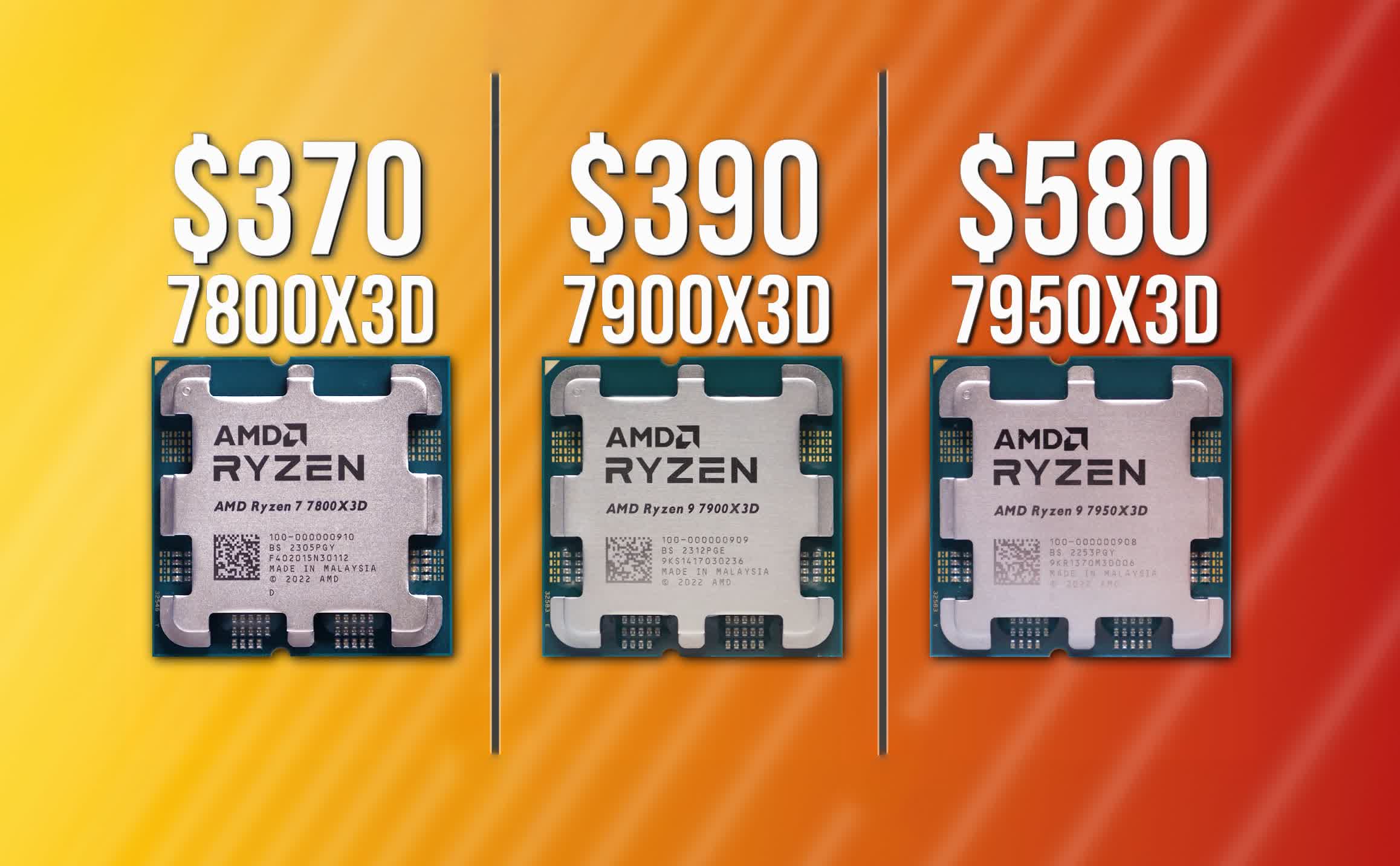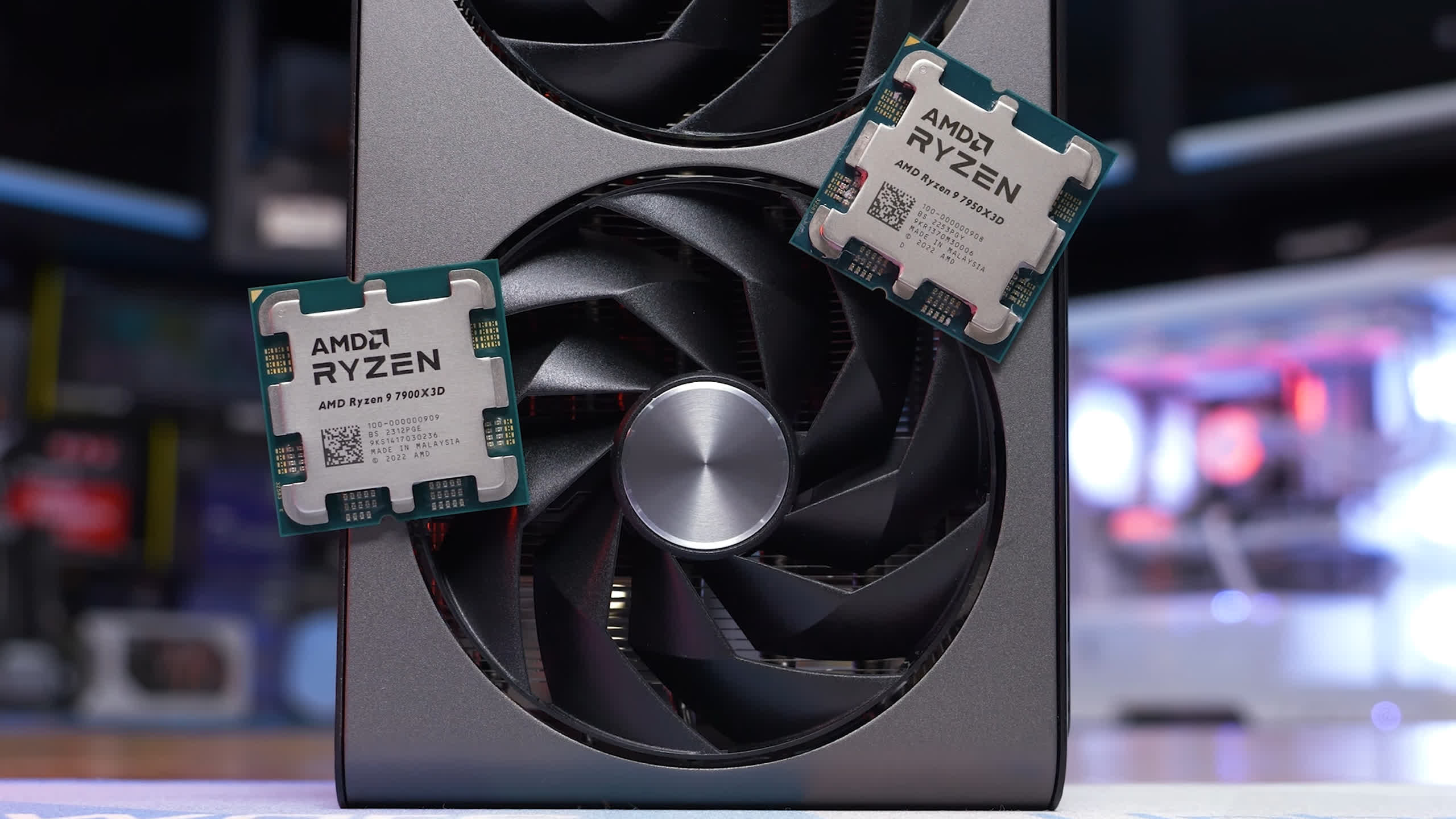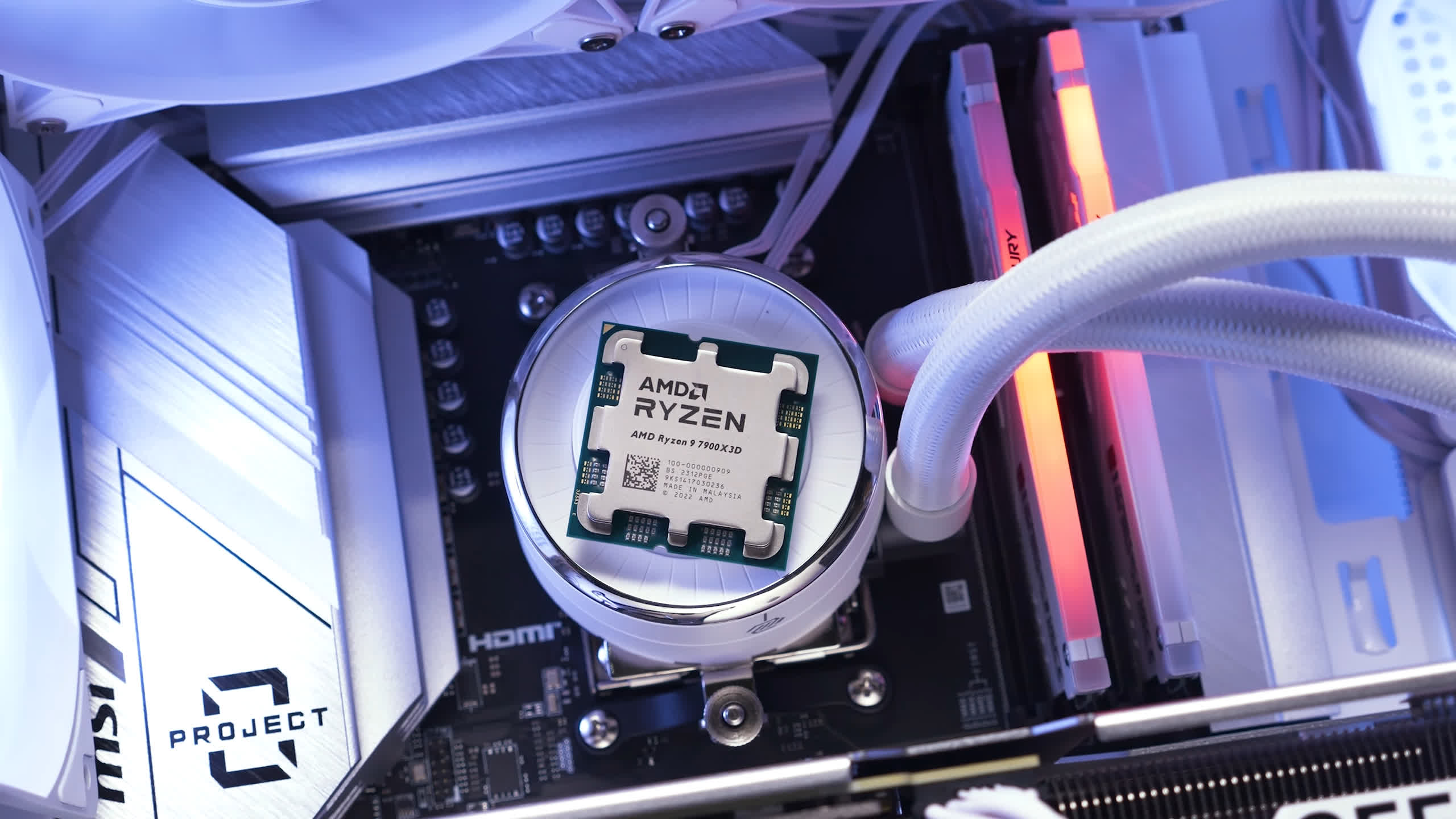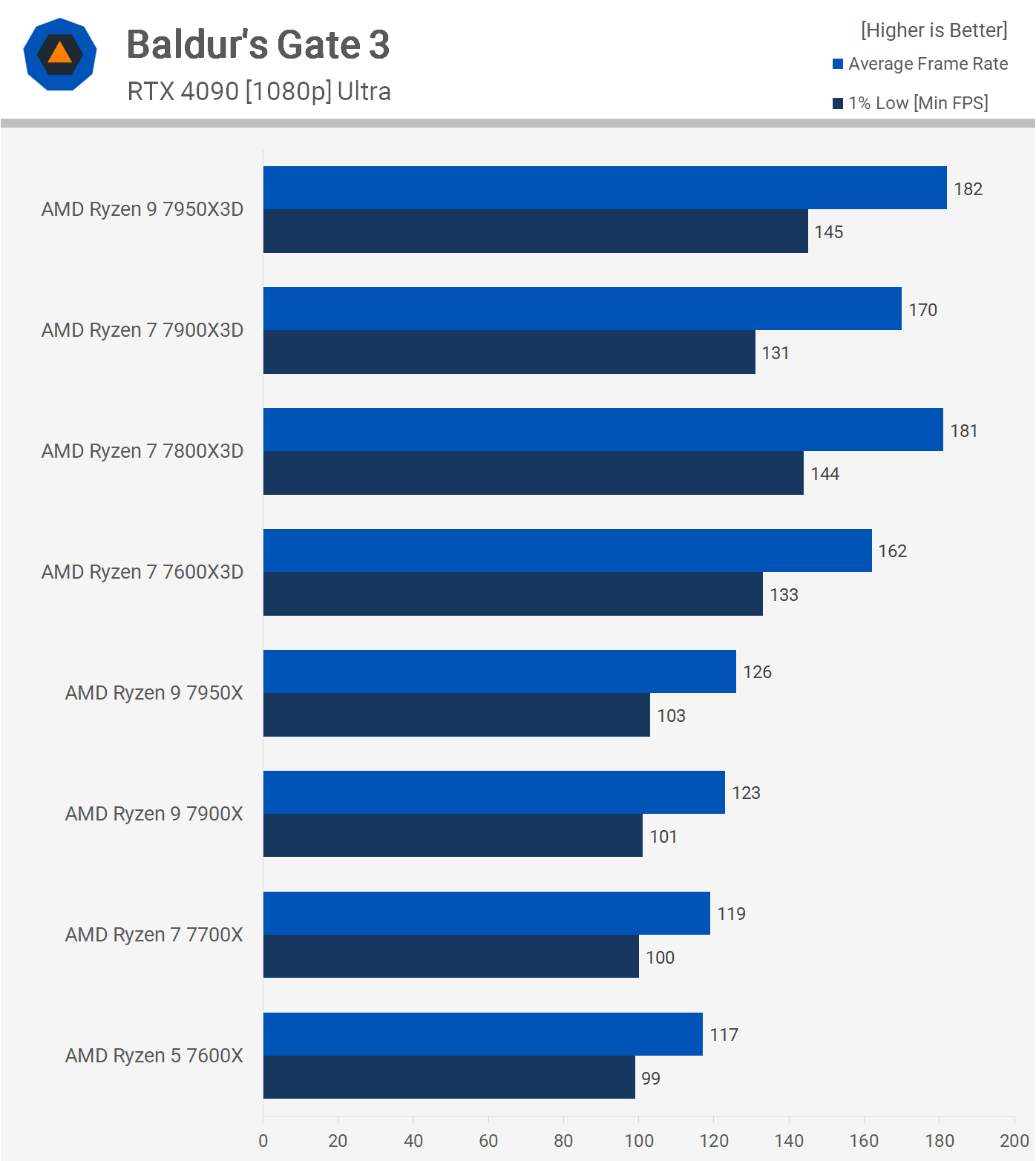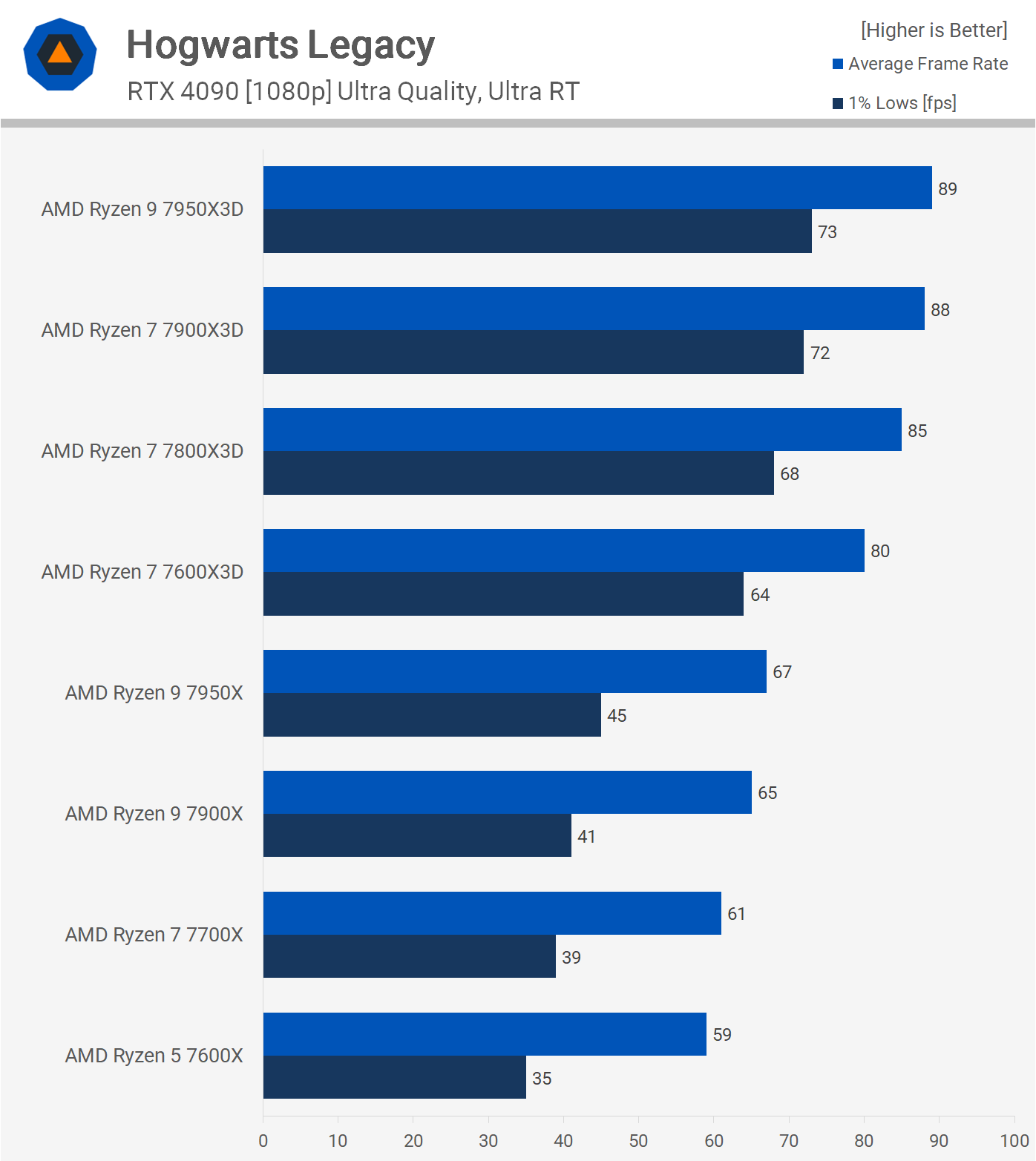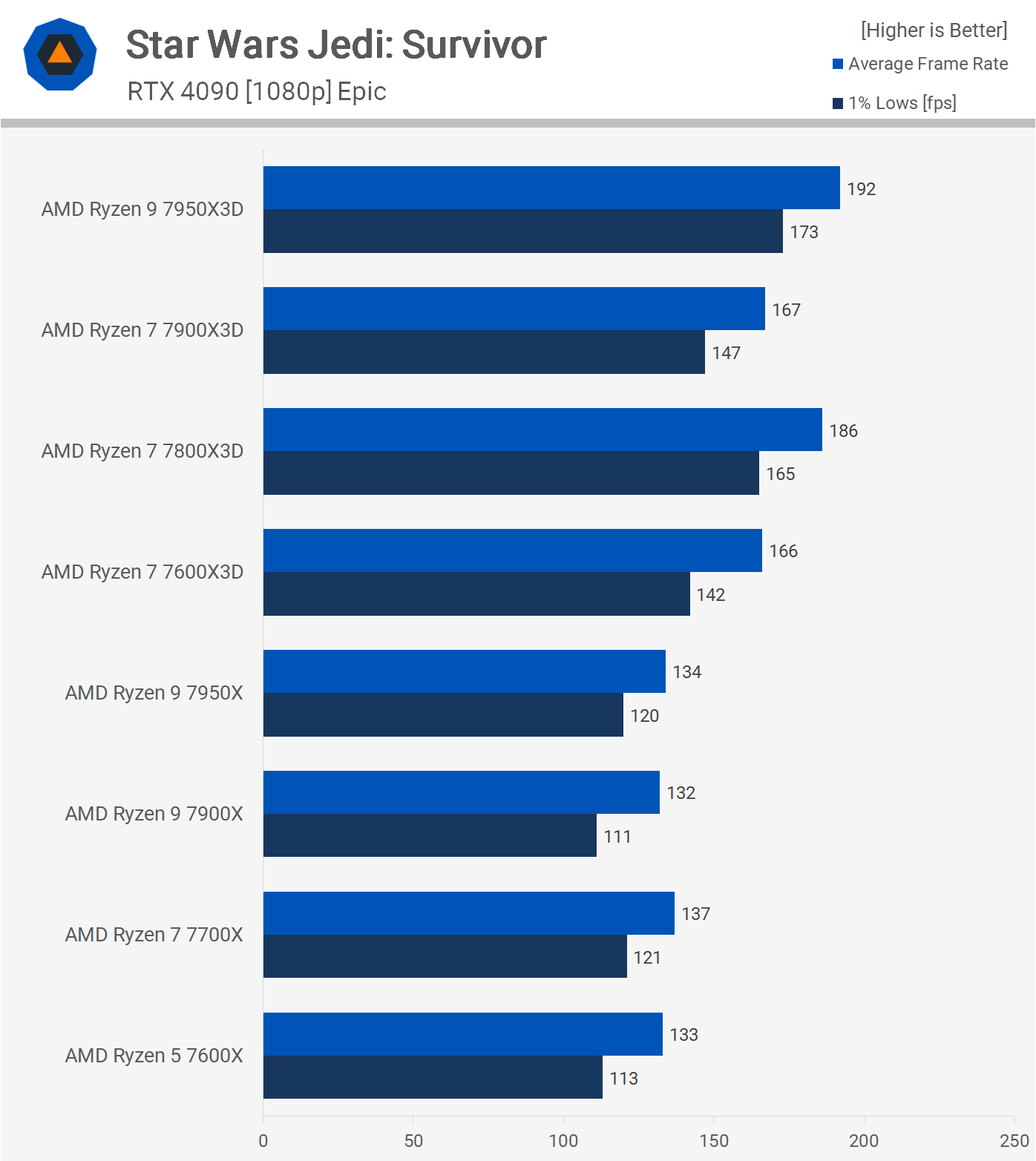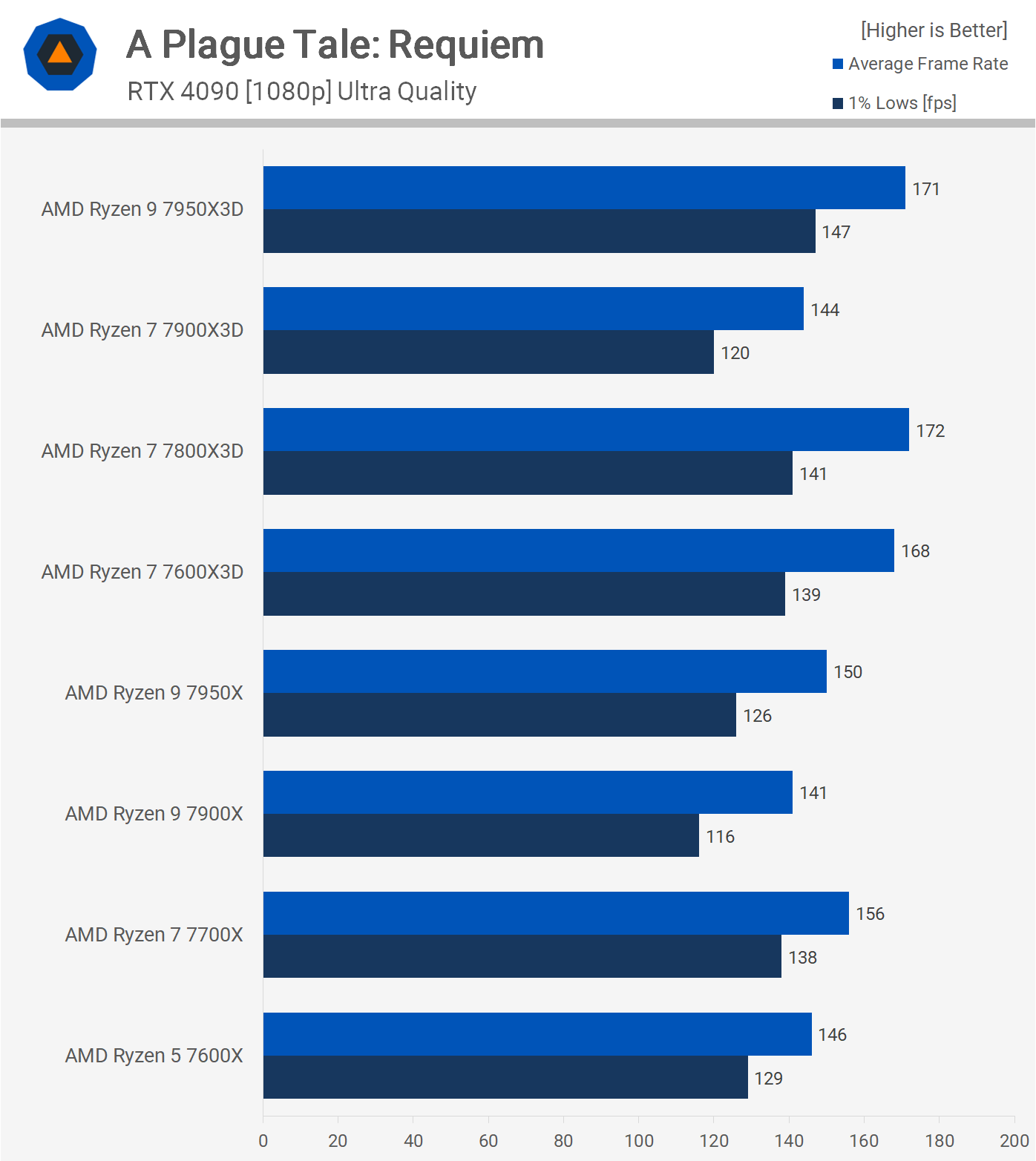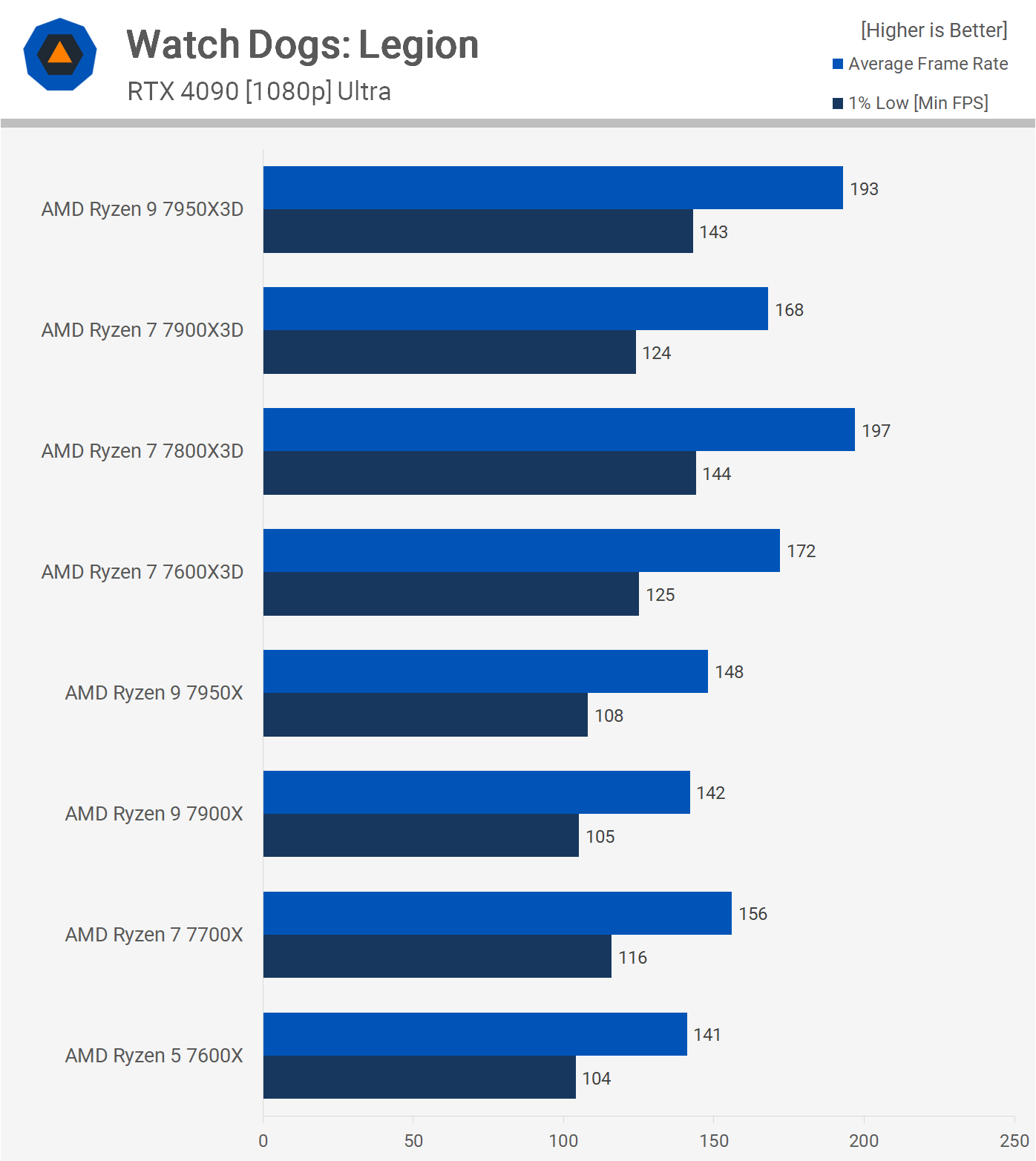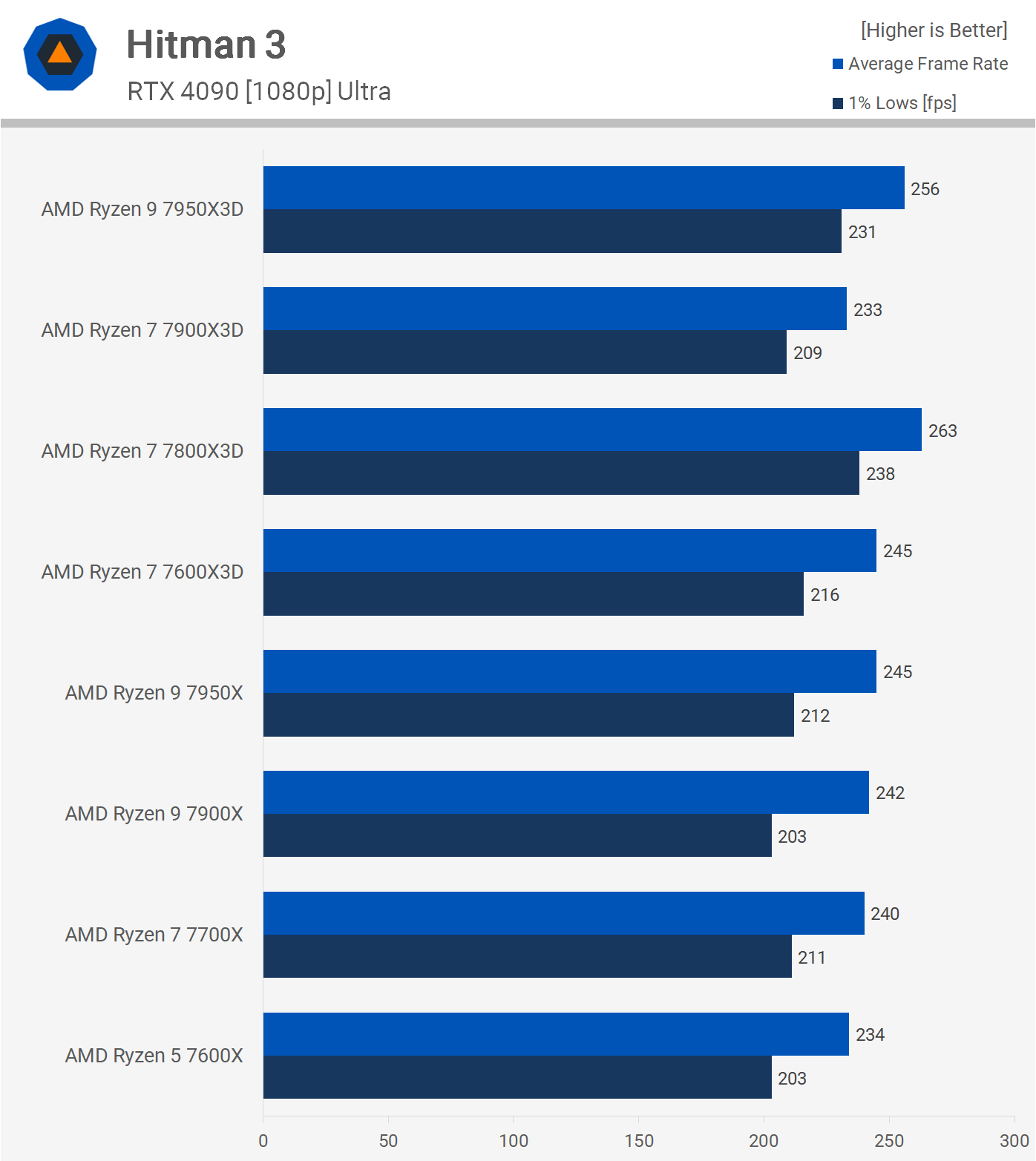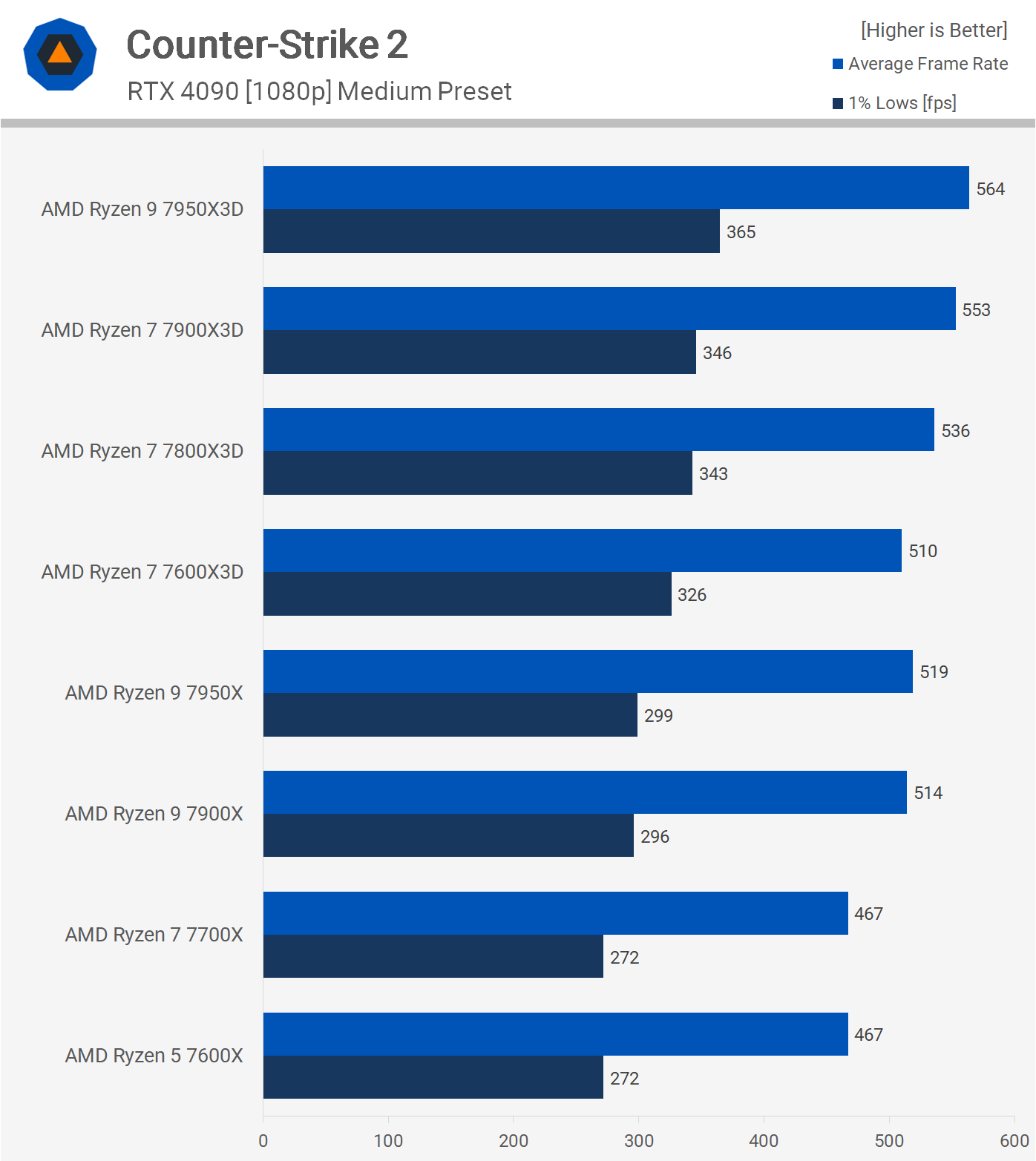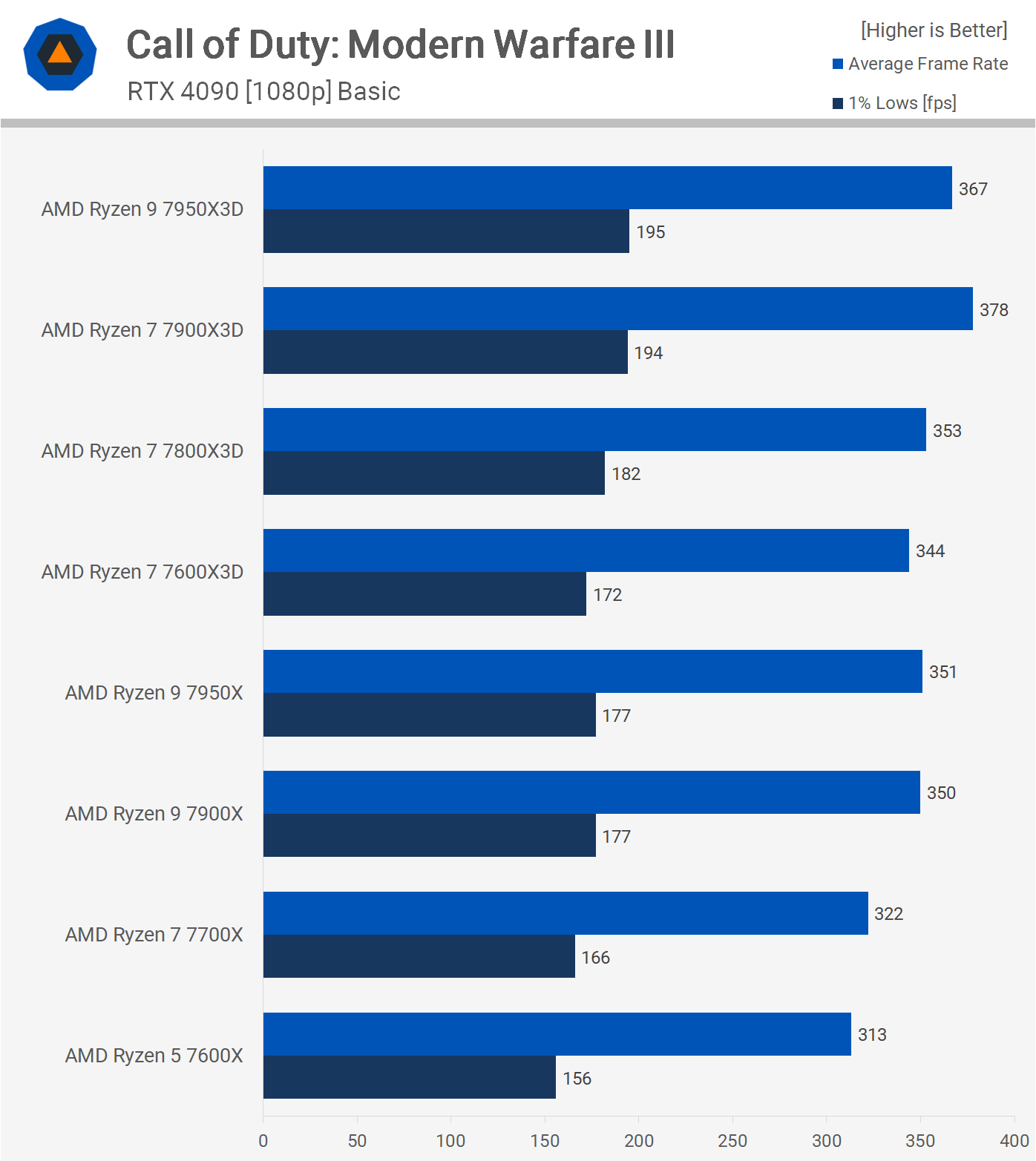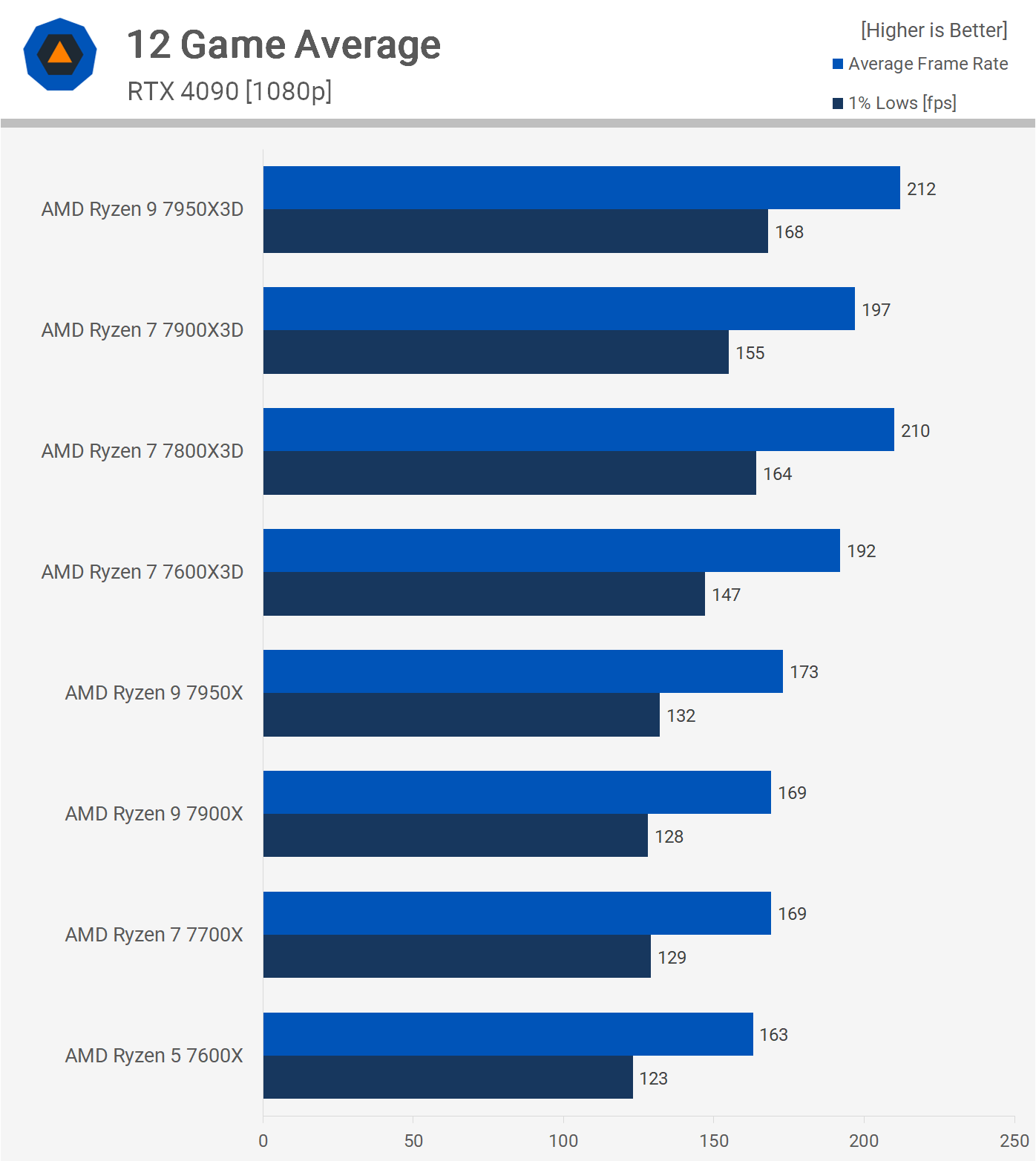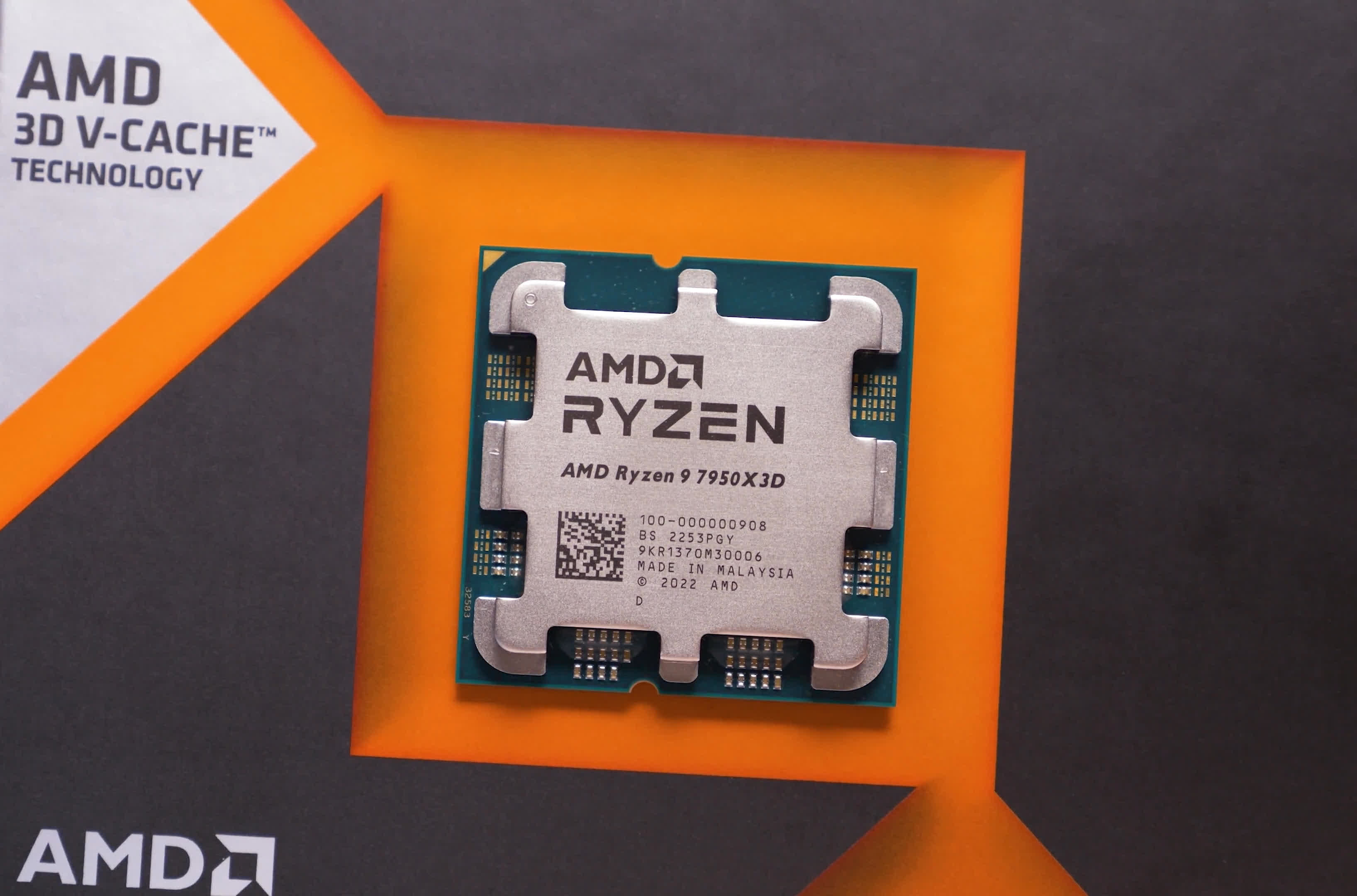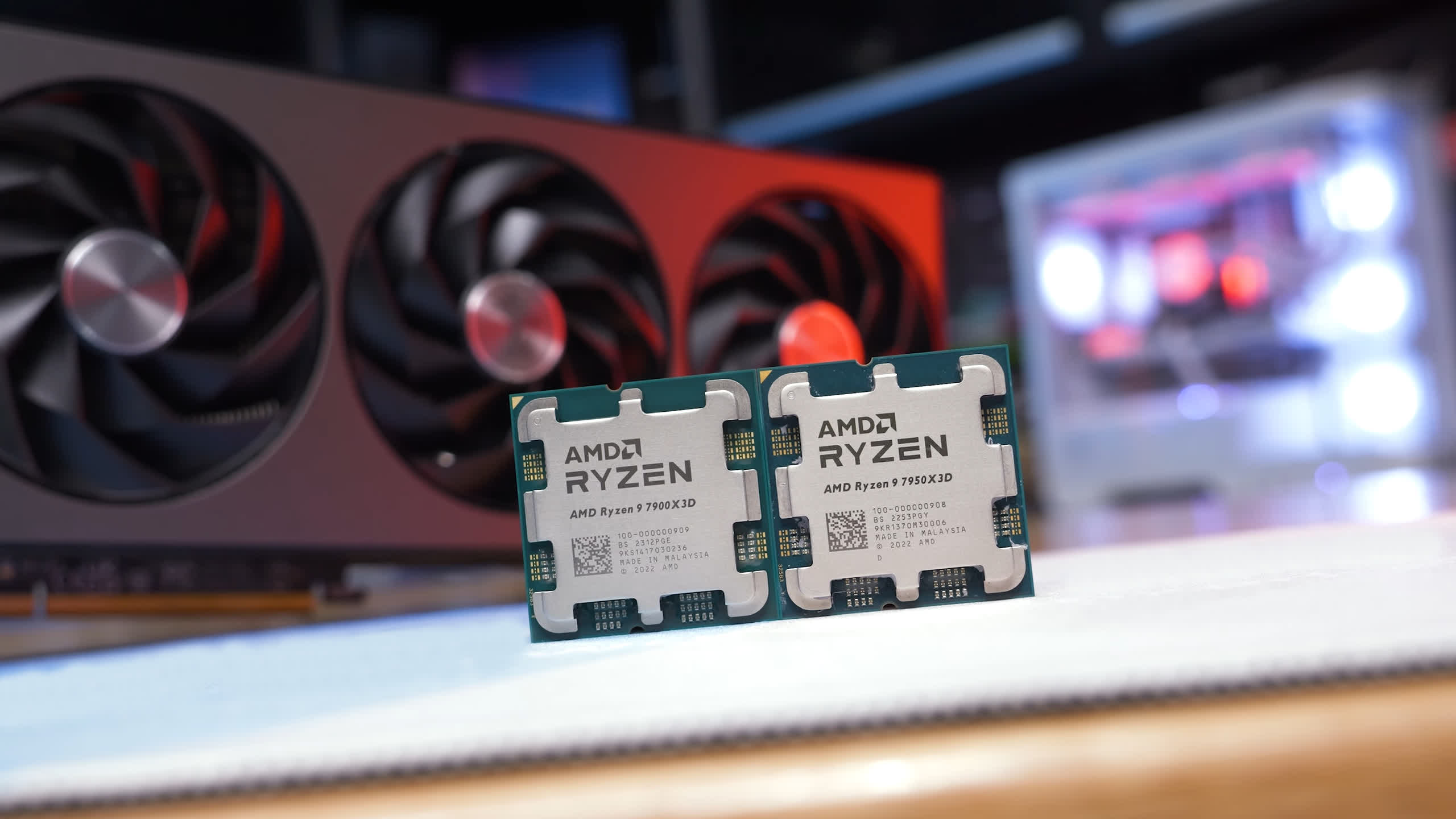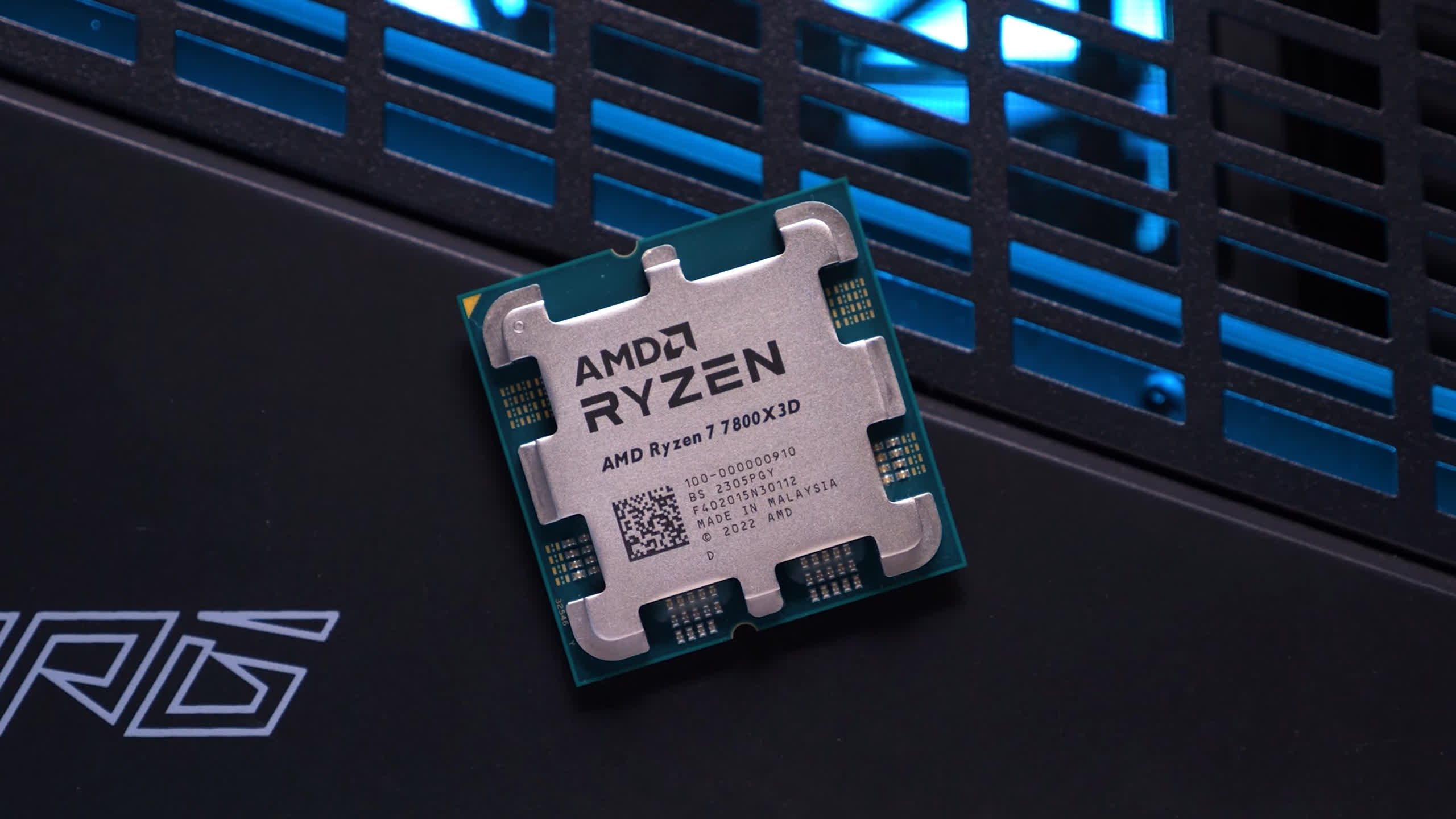We finally got around to testing the Ryzen 9 7900X3D, which was released a little over a year ago, so the timing feels right . All kidding aside, this was never a CPU we were interested in because at $600, it simply didn't make sense. Even without reviewing it, we already knew all we needed to know given our experience with the 7800X3D and 7950X3D. Frankly, at the time, we had more interesting products to cover, but one year later and that's no longer the case, so let's do it.
Formerly at $600, you were better off buying the 7950X3D for $700. That mere 17% price increase gave you 33% more cores, and more crucially for gaming, you got an extra two 3D V-Cache enabled cores. Alternatively, if gaming was the focus, then the 7800X3D for $450 was not only a lot cheaper but also guaranteed to deliver better gaming performance as it packed eight 3D V-Cache enabled cores, whereas the 7900X3D is limited to just six.
With recent pricing changes, things have changed in a rather big way. The 7800X3D can now be had for as little as $370, and the 7950X3D $580, which is near enough to a 20% discount on both parts. But those aren't the biggest discounts; the 7900X3D has seen 35% slashed off its price, dropping it to just $390, making it a mere $20 more than the 7800X3D.
This is having many prospective Ryzen buyers reconsider the 7900X3D. The only problem is there's very little benchmark data online as this part never had a review program. So, we went and got one, and then threw our battery of gaming benchmarks at it, to see how it compares against the 7950X3D and 7800X3D, but also the rest of the Ryzen 7000 series.
For testing, we're using the Gigabyte X670E Aorus Master motherboard running the latest F22 BIOS, and for the memory, we have a 32GB DDR5-6000 CL30 kit. For the GPU, we're of course using the GeForce RTX 4090 as it's the best tool for measuring the gaming performance of CPUs, and this means we'll also be testing at 1080p.
If you're wondering why reviewers test this way and you'd like to learn more, we have an explainer that covers that. Now let's get into the data…
Benchmarks
First up is Baldur's Gate 3, which has been an excellent title for the X3D chips. The 7800X3D, for example, is 52% faster than the 7700X in this game. However, while the non-3D V-Cache parts are quite similar in terms of performance, the faster X3D variants show more variance in the results. The 7800X3D and 7950X3D delivered similar performance, but the 7900X3D was slightly slower, trailing by a 7% margin.
This is because it has fewer 3D V-Cache enabled cores, just six rather than eight, and the game is configured to only run on the 3D V-Cache enabled cores. Out of curiosity, we disabled the non-3D V-Cache CCD on the 7900X3D, creating what would be a 7600X3D if such a part existed, and doing so further reduced performance, presumably because the second CCD was being used to handle background tasks, or really anything not related to Baldur's Gate 3. Even so, a 7600X3D would still be almost 30% faster than the 7950X in this game.
Moving on to Cyberpunk 2077: Phantom Liberty, we start to see some examples of why it's difficult to predict the performance of these processors. The dual CCD design of the 7950X3D costs it some performance here, as the 7800X3D is up to 6% faster. However, reducing the 3D V-Cache core count to six further reduces performance, as here the 7900X3D was good for 171 fps, making it 12% slower than the 7800X3D. But if we disable the second CCD on the 7900X3D, effectively creating a 7600X3D, performance actually improves by 6%, as we're no longer paying a penalty for cross-CCD communication, and those additional slower cores aren't useful in this title.
Essentially, for maximum performance, you want eight 3D V-Cache enabled cores, and ideally, you want them all within the same core complex due to scheduling not being perfect.
Next, we have Hogwarts Legacy, where performance does improve with additional cores, albeit not significantly. However, we are seeing better performance with the 7900X3D and 7950X3D over the 7800X3D, for example, and the simulated 7600X3D is slower again. We also saw similar performance trends with the non-3D V-Cache models. The 7900X3D was 4% faster than the 7800X3D in this game, so not a massive margin, but this is the first example where the 12-core part is faster for gaming.
The Star Wars Jedi: Survivor results are interesting, as here the 7800X3D and 7950X3D delivered similar performance, with the 7950X3D just 3% faster when comparing the average frame rate. However, the 7800X3D was still 11% faster than the 7900X3D, as the game benefits from having eight 3D V-Cache enabled cores. This performance deficit wasn't as pronounced with the slower non-3D V-Cache CPUs.
Assetto Corsa Competizione (ACC) is a game that doesn't utilize core-heavy CPUs well, but it does benefit from improved cache performance, and we see that with the X3D chips. Again, the 7800X3D and 7950X3D are very similar in terms of performance, and while the 7900X3D isn't far off the mark, it did slip a little, coming in 4% slower than the 7800X3D. Interestingly, if we disable the second CCD on the 7900X3D, again creating a 7600X3D, performance does fall away, which was unexpected in this title.
Spider-Man Remastered sees little in the way of a performance benefit with the X3D chips, though we are using ray tracing here, which does limit the performance of the RTX 4090. However, we're still typically looking at over 150 fps.
The 7900X3D is comparable to the 7800X3D and 7950X3D, and we observe that disabling the second non-3D V-Cache enabled CCD results in a decline in performance, particularly in the 1% lows.
A Plague Tale: Requiem was an odd case that caused more than a few headaches, resulting in multiple clean Windows installations in an effort to fix the 7900X3D's performance. Testing showed the 7900X3D massively underperforming, to a degree that doesn't really make sense for a few reasons. Firstly, dual CCDs don't appear to be an issue here, as the 7950X3D matched the 7800X3D, but also having just six cores with access to the 3D V-Cache doesn't seem to be a problem, as disabling the second CCD on the 7900X3D resulted in pretty great performance with the simulated 7600X3D.
However, it gets even more confusing as we see similar margins with the non-3D V-Cache parts, particularly the 7900X, which is weaker than expected, trailing even the 7600X, though this time the 7700X was faster than the 7950X, indicating a dual CCD issue.
The Assassin's Creed Mirage results are straightforward. With the X3D parts, having eight cores with access to the larger L3 buffer results in around a 10% performance boost. Then, without the 3D V-Cache, all Zen 4 parts cap performance at around 175-176 fps regardless of core count or configuration.
A similar story unfolds when testing with Watch Dogs: Legion. Having an additional two cores with access to the 3D V-Cache boosts performance by around 15%. So, if you're planning to purchase an X3D processor for maximum gaming performance, ideally, you want a model packing eight cores per CCD.
Hitman 3 presents some intriguing results for us. First, this game doesn't significantly benefit from the additional L3 cache; the 7800X3D, for example, is just 10% faster than the standard 7700X. We observe that the game can run at around 230 fps with six Zen 4 cores and around 240 fps with eight cores, or 260 fps if you add in the 3D V-Cache. However, with just six 3D V-Cache enabled cores, performance is capped at 245 fps. But if you consider scheduling issues, as is the case with the 7900X3D, performance drops to what we see with the standard 7600X, so the results are varied here.
The Counter-Strike 2 results are also quite surprising, mostly because there is a noticeable performance uplift from the 7600X and 7700X to the dual CCD 7900X and 7950X. It seems as though scheduling is working exceptionally well here, with the game running on one CCD while background tasks are running on the second, somewhat like how APO enhances Intel's P and E-core design.
We see a similar effect with the X3D parts, though here the simulated 7600X3D is a bit slower than the 7800X3D, as the 8-core enabled 3D V-Cache part is able to reach new heights. Nevertheless, the 7900X3D is still faster again, albeit by a small margin.
Finally, we have Call of Duty: Modern Warfare III, and these results are probably the most straightforward to explain that we've seen. In short, the game benefits from having more cores with the dual CCD design, and this seems to be due to the scheduling working well. Again, the game runs on one CCD with everything else taken care of by the other, giving the 12 and 16 core parts an advantage, whether with or without the 3D V-Cache.
In summary, the 7900X3D performs well here, delivering a small 4% boost over the 7800X3D, though it was also just 5% faster than the standard 7900X.
Average Performance
Now, here's a look at the 12-game average, and the results are pretty much as expected. The 3D V-Cache significantly enhances gaming performance, working best when eight cores can access the larger L3 buffer, as is the case for the 7800X3D and 7950X3D.
The 7900X3D isn't nearly as strong in terms of peak gaming performance, despite overall performance still being very good. After all, the 7800X3D and 7950X3D were only around 7% faster on average, though they do appear much more impressive when compared to the non-3D models.
For example, the 7800X3D was 24% faster than the 7700X, while the 7900X3D was 17% faster than the 7900X. So, there's still a notable uplift, but not as substantial as one might have expected.
What We Learned
So there you have it, the results overall aren't terribly surprising. It makes sense that the 7900X3D isn't as potent as the 7800X3D and 7950X3D for gaming. With just six cores able to access the 3D V-Cache, performance overall was still excellent. However, there's certainly a performance penalty, and while not massive, for those of you primarily gaming, the 7800X3D makes way more sense.
Frankly, we've never been that keen on the 7950X3D. Really, both CCDs should have been armed with 3D V-Cache; that would have been a game-changer. But it can still be every bit as fast as the 7800X3D, though in some instances, you might have to tackle the scheduling issues manually with a program such as Process Lasso.
The 7900X3D still has the same scheduling issues as the 7950X3D, at least in some games, with the added disadvantage of the six-core penalty. So again, while performance overall is excellent, it's not without its quirks.
The dual CCD X3D chips were always a bit odd with just one of the CCDs featuring 3D V-Cache, and typically speaking, the larger L3 cache is most useful for improving CPU-limited gaming performance. Though we're sure there are application workloads out there that also benefit from more L3, we just haven't come across them, and admittedly, productivity testing isn't the focus of what regularly we do here.
The point is, the most optimal Zen 4 processor for gaming is the 7800X3D. It ensures maximum performance in all games, at least relative to other Zen 4 processors. There are certainly examples where the 12 and 16 core models are faster, but with a heavy reliance on AMD's software scheduling, they're a bit all over the place.
This makes the 7950X3D and 7900X3D niche products, as they really only make sense for people who are serious about gaming on their productivity workstations. However, with the 7900X3D priced at just $390 right now – the same price as the 7900X – you obviously wouldn't buy the non-3D model. Moreover, the 7950X costs $550 right now, and that's a 40% price hike for a 33% increase in core count. Then, if you want the 7950X3D, it's almost 50% more than the 7900X3D.
So while we would normally suggest avoiding the 7900X3D, it's a seriously interesting part at $390. We're just not sure who we'd recommend it to. If your focus is gaming, then the 7800X3D is not only faster but also cheaper, so for gaming, get that, and you also avoid the dual CCD scheduling headaches.
The 7900X3D makes the most sense for productivity applications where you're unlikely to benefit from the 3D V-Cache. But with the standard model also priced at $390, you're getting the big L3 cache for free, so why not? It really is AMD's best value Zen 4 based productivity CPU right now.
